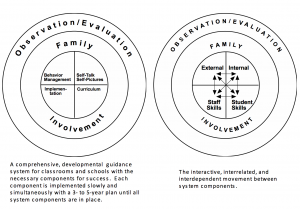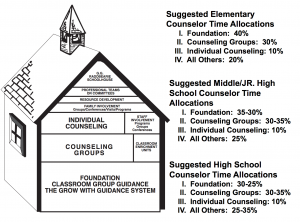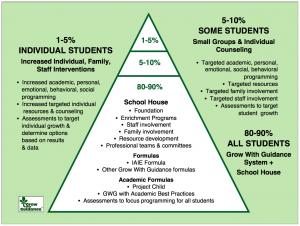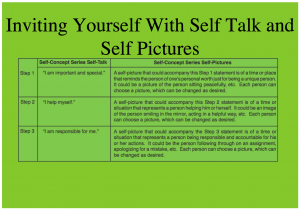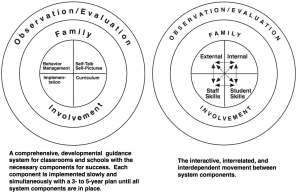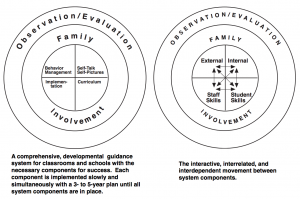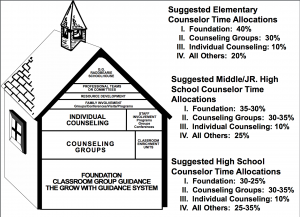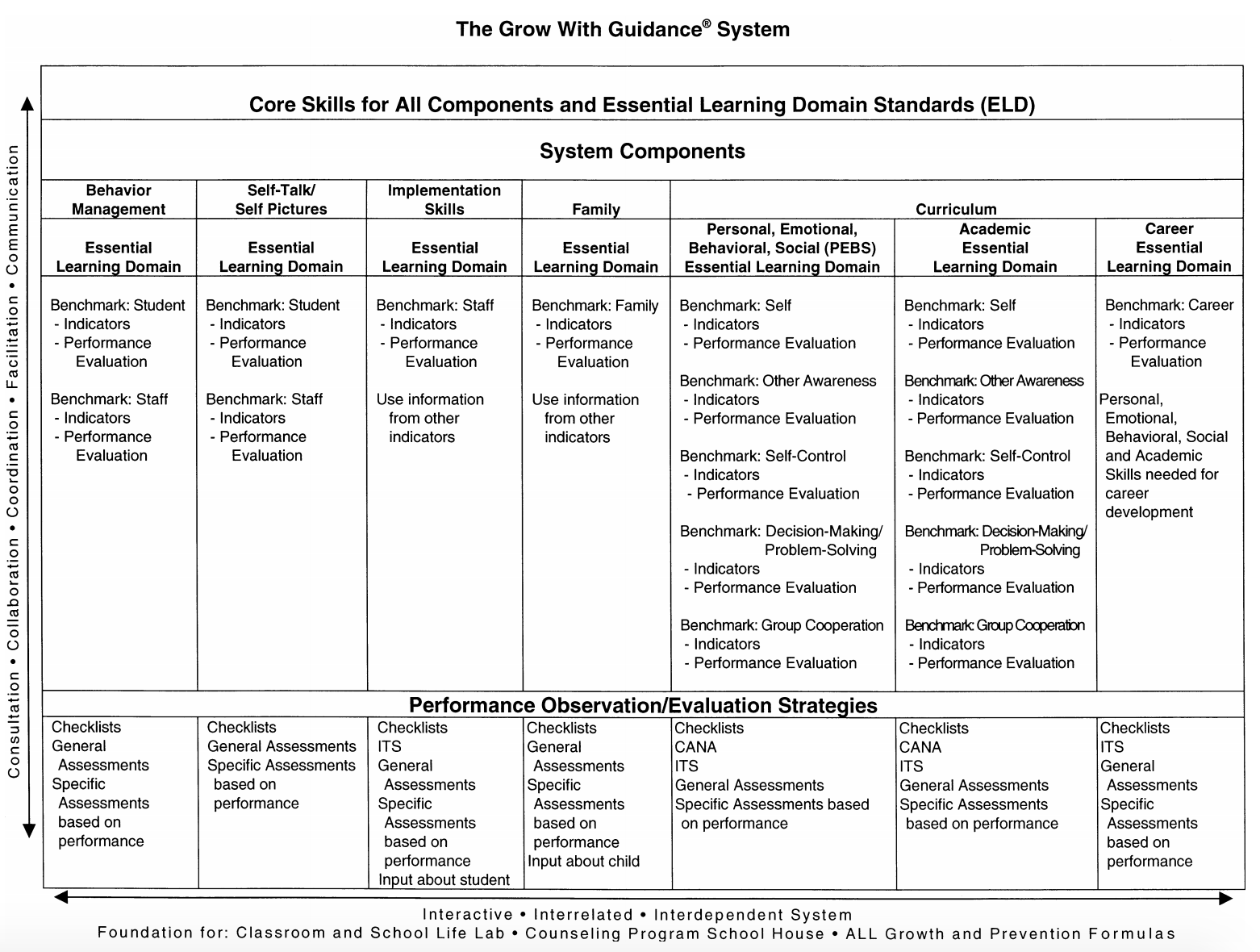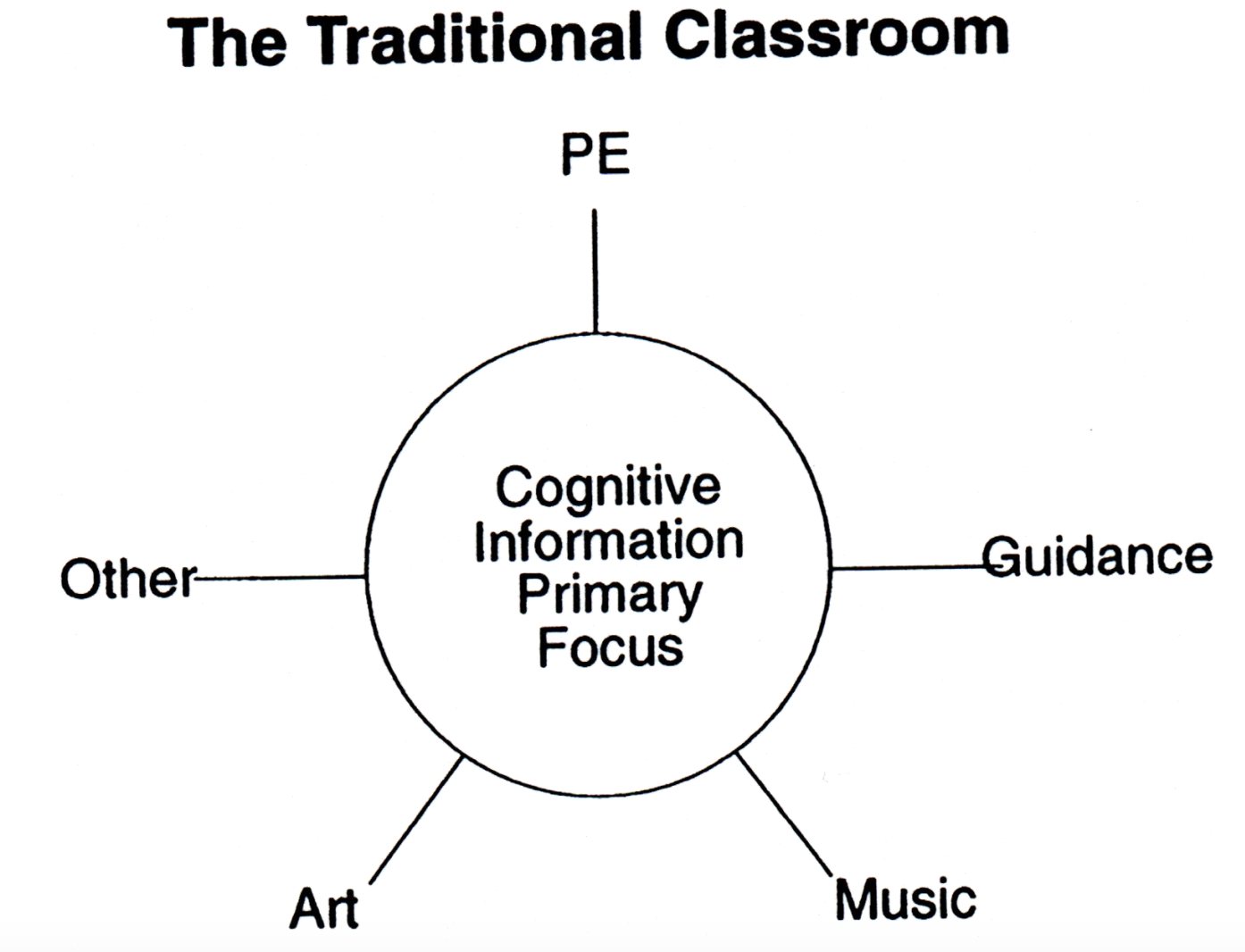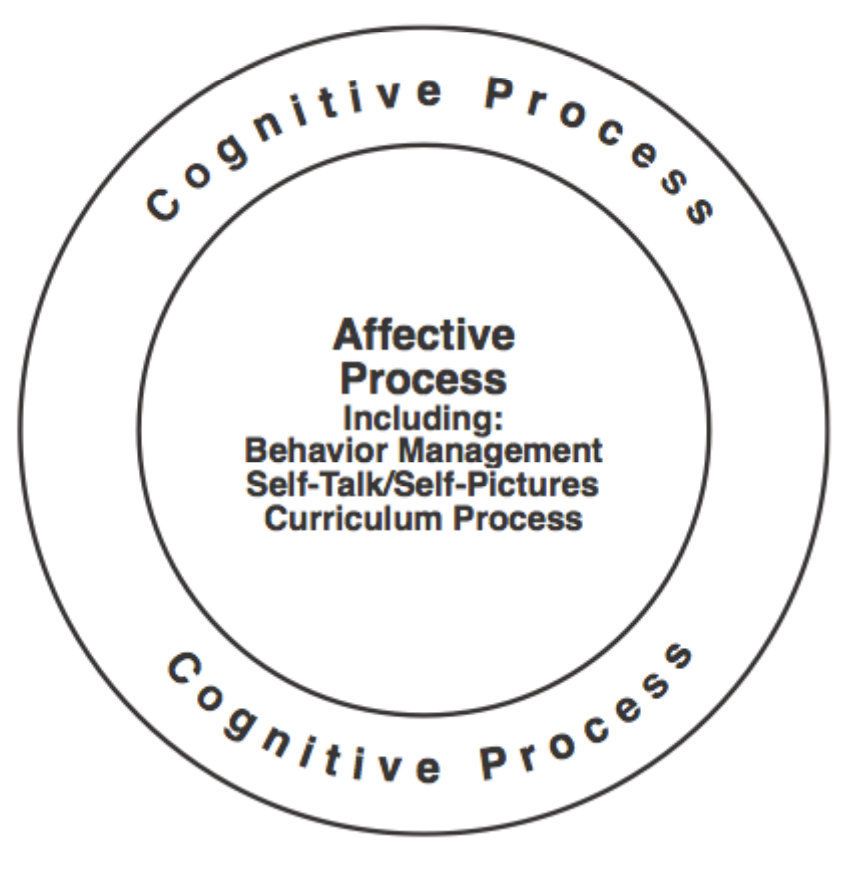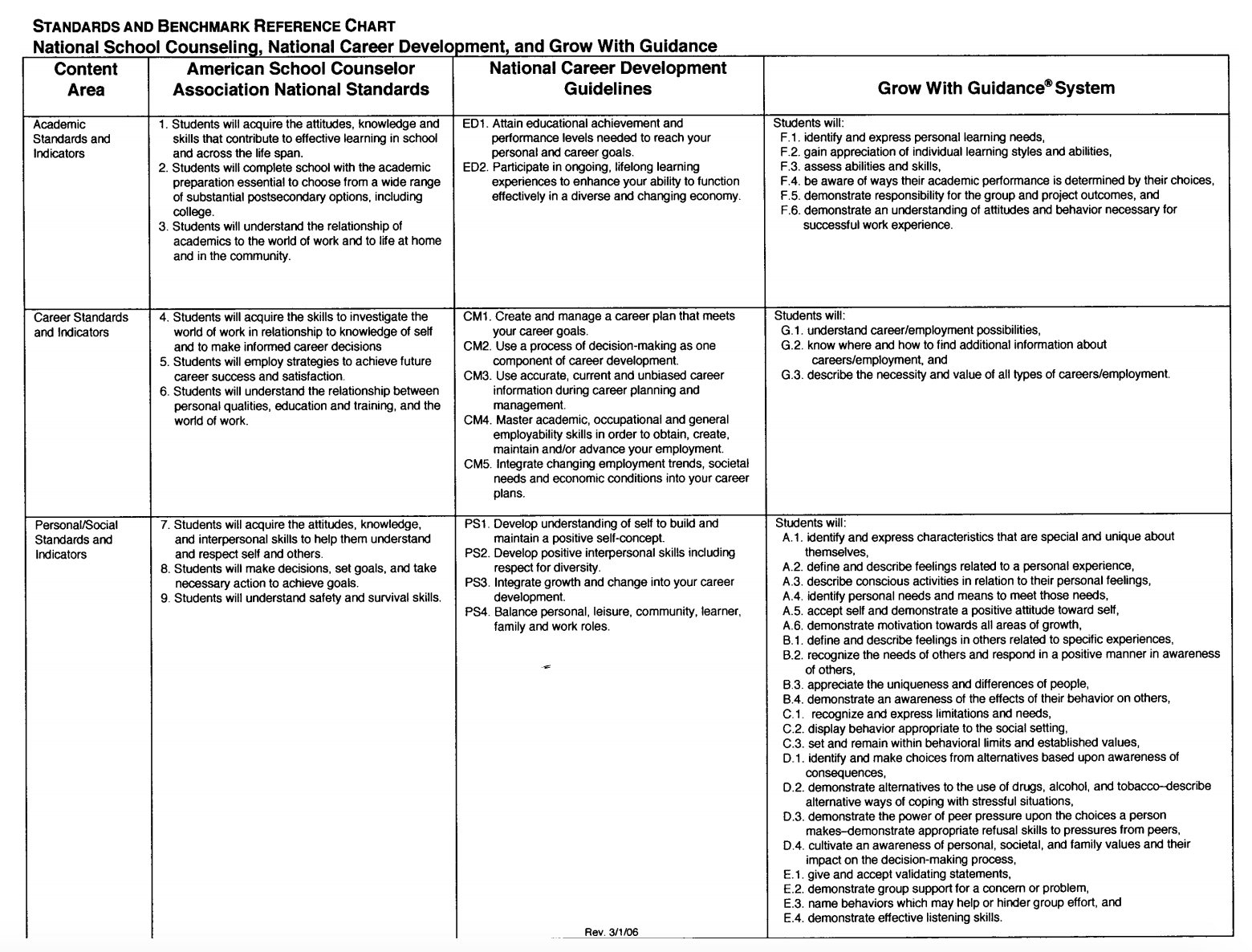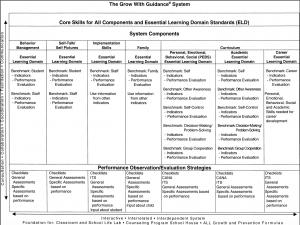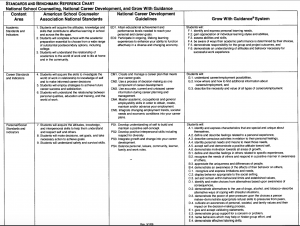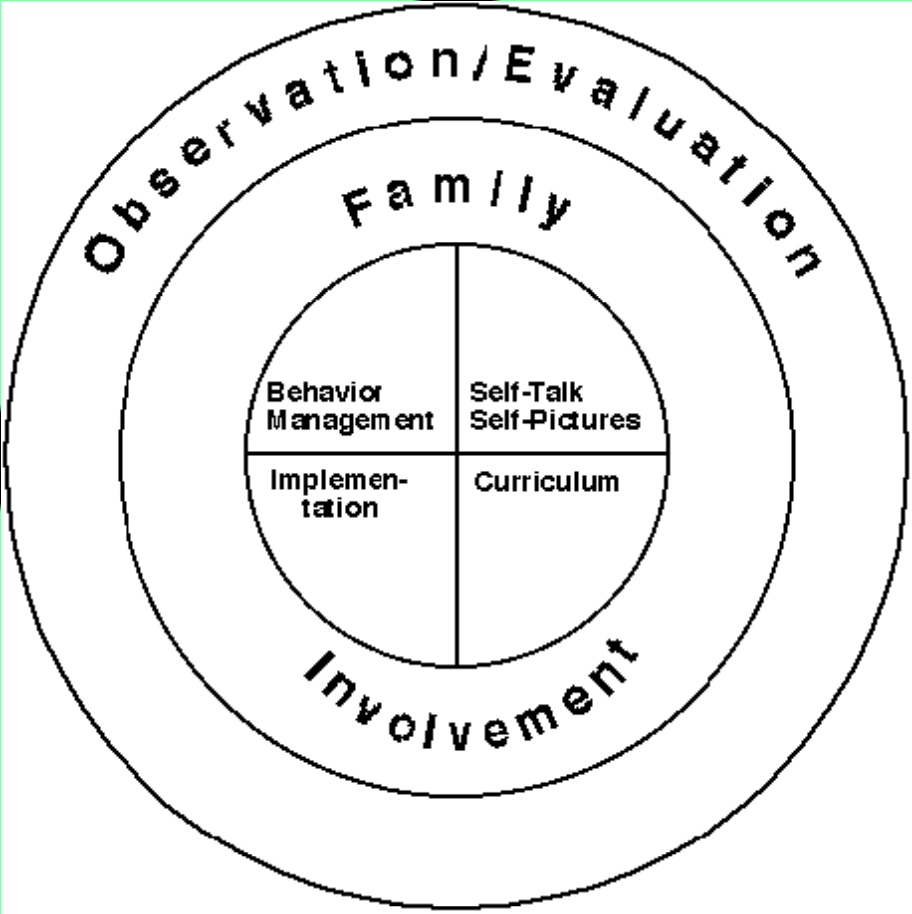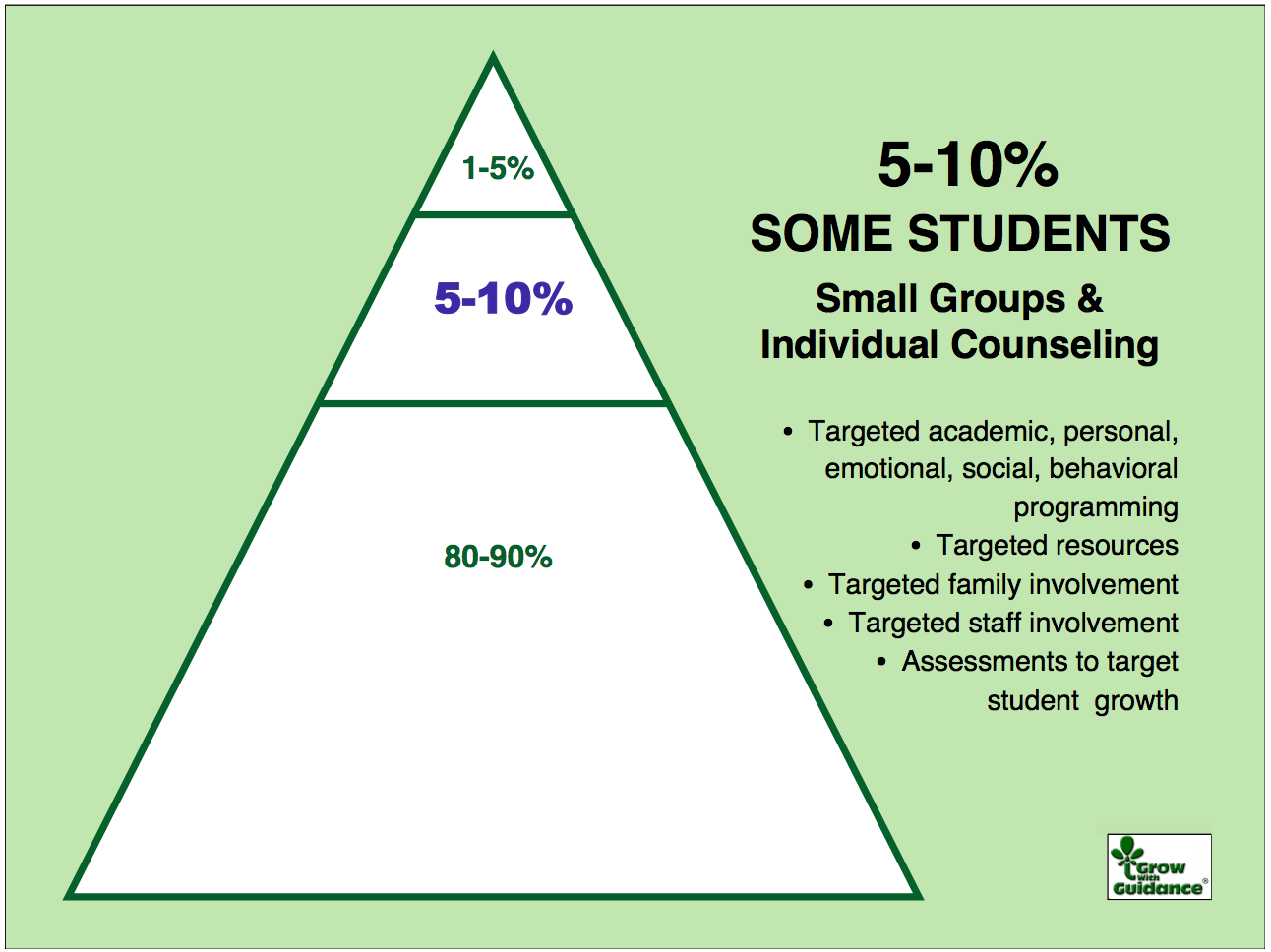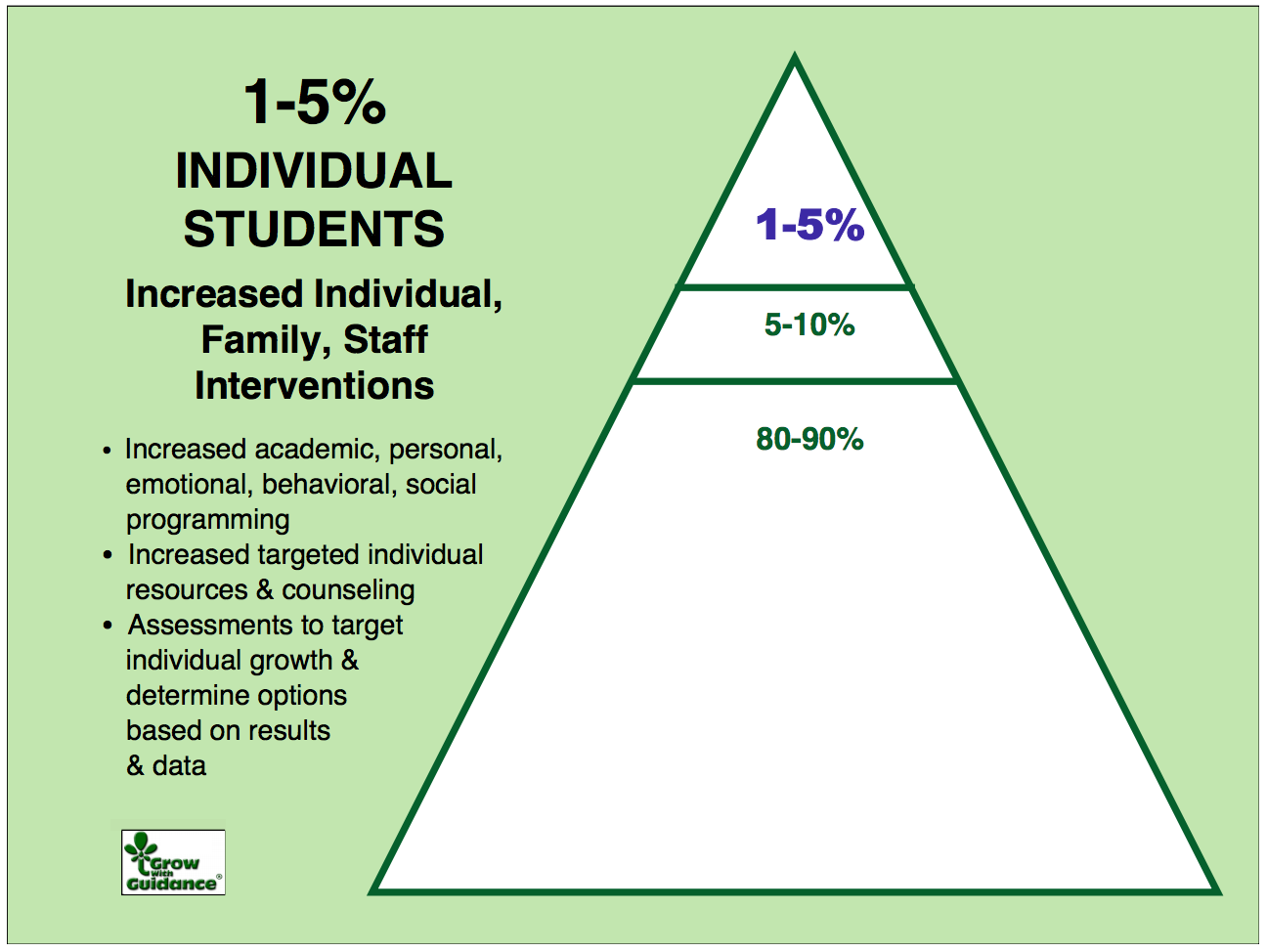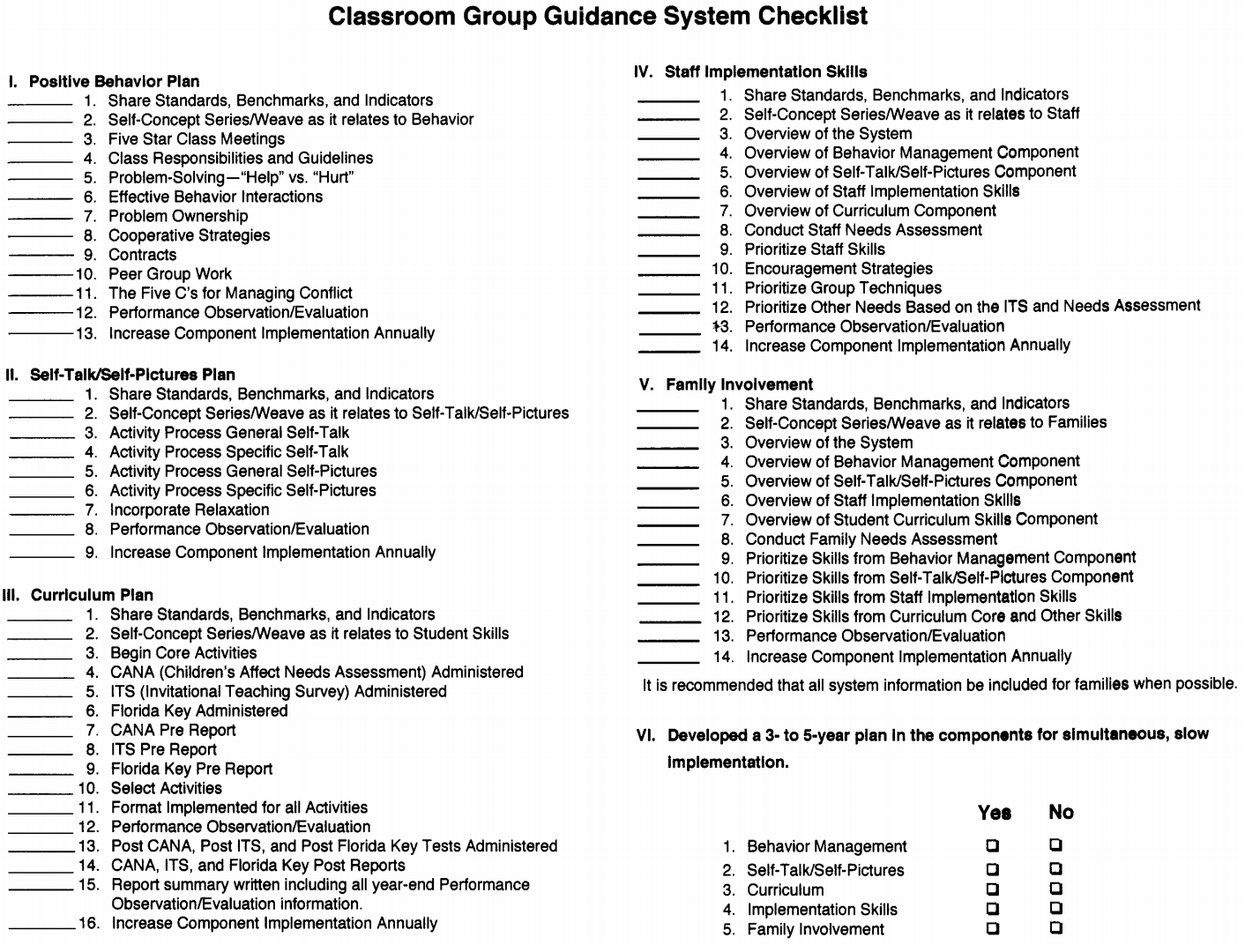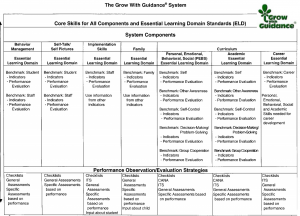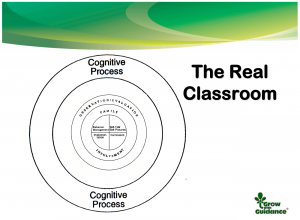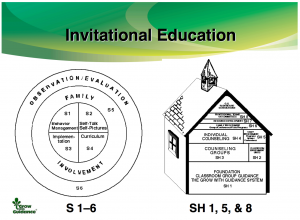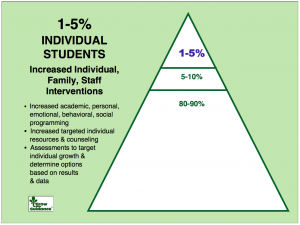Building Strong Self-Concept in Elementary School Students Using Bloom’s Taxonomy
Building a strong self-concept from an early age is critical to academic and overall wellness. Bolstering self-concept translates to better outcomes in social, emotional, behavioral, academic, and career realms. Students’ self-concept development will be explored. The application of Bloom’s Taxonomy supports the development of student self-concept. Self-concept is learned through this process. CANA results from a one year implementation of the Grow With Guidance System with third grade classrooms are overviewed.
All Ohio Counselors Conference, October 29, 2024
Building Strong Self-Concept in Elementary School Students Using Bloom’s Taxonomy [PDF]
Building Strong Self-Concept
in Elementary School Students
Using Bloom’s Taxonomy
Benjamin Shultz, LSC, LPCC ([email protected])
Tommie Radd, PhD, LPC ([email protected])
Kristin Chamberlain, PhD, LSC, LPC ([email protected])
The Dr. Tommie Radd Professorship in School Counselor Education
Ohio University Counselor Education
Objectives
Objective 1
- Participants will overview the importance of self-concept development and strategies to enhance self-concept.
Objective 2
- Participants will explore how to bolster self-concept using Bloom’s Taxonomy and the Grow with Guidance Systems Model.
Objectives
Objective 3
- Participants will learn the Self-Talk/Self-Picture System Component (Radd, 2021) from The Grow with Guidance Systems Model (2021) that aligns with the ASCA National Model (2019) as a comprehensive, developmental, and results-oriented framework for prevention and intervention in schools.
Objective 4
- Participants will actively engage in discussion on how they might partner with Ohio University to implement the Grow with Guidance system and complete pre-and-post assessments.

Bloom’s Taxonomy Categories
- Use the top of the Bloom’s Taxonomy Higher Ordered Thinking Pyramid Framework as your guide for presenting student questions related to the skill such as Applying, Analyzing, Evaluating and Creating. Find More Information here:
- https://citt.ufl.edu/resources/the-learning-process/designing-the-learning-experience/blooms-taxonomy/
Bloom’s Taxonomy
- In 1956, Bloom and colleagues worked out a framework that has been applied by generations of K-12 teachers and college instructors in their teaching (Hasić & Saračević, 2023).
- The domains:
- Cognitive (knowledge, cognition)
- Affective (attitudes, interests, motivation)
- Psychomotor (physical activities and skills)
- Cognitive domain includes learning objectives related to knowledge and thinking.
- Affective domain includes learning goals related to attitudes, interests, and value judgments.
- Psychomotor area includes learning objectives related to manual and motor skills (Armstrong, 2010).
Bloom’s Taxonomy Strategies
- Think-pair-share to explain ideas and increase understanding of lesson delivered by school counselor.
- Demonstrate how a student is special and important.
- Provide examples of how a student is helping him/herself.
- Evaluate how a choice can be helpful or hurtful.
Self
- SELF-WORTH – a sense of one’s own innate value as a human being. Self-worth is the internal sense of being good enough and worthy of love and belonging from others.
- SELF-WORTH THEORY – An individual’s main priority in life is to find self-acceptance (Covington & Beery, 1976).
- SELF-CONCEPT – Self-concept is the image we have of ourselves, both positive and negative attributes.
- UNCONDITIONAL SELF ACCEPTANCE (USA) proposed by Albert Ellis.
- A POSTIVE SELF-CONCEPT IS REFLECTED IN A HIGH SENSE OF SELF-WORTH.
- HEALTHY SELF-CONCEPT DEVELOPMENT is essential for student success (Radd, 2021).
Importance of Secure Sense of Self-Worth & Self-Concept during Elementary School
- Students experience improved social cognition.
- Students with a secure self-concept are better at recognizing emotions (positive and neutral facial expressions) in others (Cordeiro et al., 2021).
- Students feel more confident about class participation (Lobos et al, 2019).
- Students achieve higher attendance rates (Lobos et al., 2019).
- Students experience a decrease in self-worth when transitioning to middle school (Onetti et al., 2019).
The Grow with Guidance (GWG) Systems Model (Radd, 2021)
- The GWG system is a developmental, performance-based system for use in schools.
- The GWG system includes six interactive components:
- Self-Talk, Self Pictures
- Behavior Management
- Implementation
- Curriculum
- Family Involvement
- Observation/Evaluation
- The Self-Concept series and weave is present in each component to guide students to develop a strong secure self-concept.
- All activities engage the students in the process.
- Each activity builds on the previous activities, so it is a learning process that requires reviewing, connection, and practice.


The Core of the Grow with Guidance System
- The Self-Concept series is one of the core concepts of the GWG System
- Truth & Unconditional Acceptance: All people are special and valuable because they are unique and different from one another.
- Behavior: This uniqueness comes with an inherent responsibility to help and not hurt self or others.
- Accountability: People are responsible for self-monitoring which translates to them embracing their uniqueness and worth (Radd, 2021).
The Self-Concept Series in the GWG Model is Taught to All Students
- All are important and valuable no matter what they think, say, feel, and do.
- All show they are remembering their worth by making helpful choices toward themselves and others. They are responsible for helping, not hurting self and others.
- All are responsible for their choices. This accountability empowers all to make improvements because of their worth.
NOTE: Listen to podcast at https://allsucceed.com/media/
Self-Concept Series: Self-Talk and Self-Pictures
| Self-Concept Series Self Talk | Self-Concetp Series Self-Pictures | |
|---|---|---|
| Step 1 | “I am important and special.” | A self-picture that could accompany this Step 1 statement is of a time or place that reminds the person of one’s personal worth just for being a unique person. It could be a picture of the person sitting peacefully, etc. Each person can choose a picture, which can be changed as desired. |
| Step 2 | “I help myself.” | A self-picture that could accompany this Step 2 statement is of a time or situation that represents a person helping him or herself. It could be an image of the person smiling in the mirror, acting in a helpful way, etc. Each person can choose a picture, which can be changed as desired. |
| Step 3 | “I am responsible for me.” | A self-picture that could accompany the Step 3 statement is of a time or situation that represents a person being responsible and accountable for his or her actions. It could be the person following through on an assignment, apologizing for a mistake, etc. Each person can choose a picture, which can be changed as desired. |

Alexander Elementary Results Data
Children’s Affect Needs Assessment (CANA) – Grade 3
Self-Concept Series
Student General Self-Report Evaluation Tally Form and Student Comments
| Question # | Yes | No | Blank | Total | % Yes |
|---|---|---|---|---|---|
| 1. Have the activities helped you? | 88 | 17 | 0 | 105 | 84% |
| 2. Do you feel better about yourself? | 90 | 15 | 0 | 105 | 86% |
| 3. Do you feel better about learning? | 92 | 12 | 1 | 104 | 88% |
| 4. Do you get along better with others? | 82 | 21 | 2 | 103 | 82% |
| 5. Can you handle problems better? | 82 | 22 | 1 | 104 | 79% |
| 6. Do you get along better with your teacher? | 91 | 13 | 1 | 104 | 88% |
Children’s Affect Scale Report Form (CANA)
Year: 2023-2024
Teacher: P1
Building: Elementary
Grade: 3
*Denotes Statistical Significance
| Strand | Pre % Yes | Post % Yes | % Change |
|---|---|---|---|
| Self (S) | 77 | 77 | 0 |
| Other Awareness (OA) | 84 | 81 | -3 |
| Self-Control (SC) | 84 | 84 | 0 |
| Decision Making/Problem Solving (DM/PS) | 77 | 76 | -1 |
| Group Cooperation (GC) | 85 | 81 | -4 |
Children’s Affect Scale Report Form (CANA)
Year: 2023-2024
Teacher: P2
Building: Elementary Grade: 3
*Denotes Statistical Significance
| Strand | Pre % Yes | Post % Yes | % Change |
|---|---|---|---|
| Self (S) | 80 | 83 | +3 |
| Other Awareness (OA) | 84 | 82 | -2 |
| Self-Control (SC) | 88 | 89 | +1 |
| Decision Making/Problem Solving (DM/PS) | 78 | 82 | +4 |
| Group Cooperation (GC) | 90 | 83 | -7 |
Teacher: R1
Building: Elementary Grade: 3
*Denotes Statistical Significance
| Strand | Pre % Yes | Post % Yes | % Change |
|---|---|---|---|
| Self (S) | 75 | 78 | +3 |
| Other Awareness (OA) | 82 | 83 | +1 |
| Self-Control (SC) | 85 | 85 | 0 |
| Decision Making/Problem Solving (DM/PS) | 81 | 85 | +4 |
| Group Cooperation (GC) | 86 | 86 | 0 |
Teacher: A1
Building: Elementary Grade: 3
*Denotes Statistical Significance
| Strand | Pre % Yes | Post % Yes | % Change |
|---|---|---|---|
| Self (S) | 81 | 85 | +4 |
| Other Awareness (OA) | 87 | 86 | -1 |
| Self-Control (SC) | 83 | 88 | +5 |
| Decision Making/Problem Solving (DM/PS) | 70 | 79 | +9 |
| Group Cooperation (GC) | 79 | 90 | +11 |
Teacher: T1
Building: Elementary Grade: 3
*Denotes Statistical Significance
| Strand | Pre % Yes | Post % Yes | % Change |
|---|---|---|---|
| Self (S) | 77 | 75 | -2 |
| Other Awareness (OA) | 78 | 73 | -5 |
| Self-Control (SC) | 82 | 70 | *-12 |
| Decision Making/Problem Solving (DM/PS) | 73 | 73 | 0 |
| Group Cooperation (GC) | 80 | 76 | -4 |
Student General Self-Report Evaluation Tally Form and Student Comments
- Yes, it has helped me work harder in school. It pushes me to work harder.
- Makes me feel more confident.
- I can think about if my choices are helpful or hurtful! I can think better!
- It just seems to give me focus when I know what to do!
- Everyone is special in their own way.
- I keep getting sad.
- It kept me focused.
- I don’t get as mad anymore.
- I think it does. I really don’t know!
Small Groups Discussion: What category of Bloom’s Taxonomy do you use to increase self-worth in your students?
Please feel free to share any strategies!
Partnering with the Dr. Tommie Radd Professorship in School Counselor Education
School counselors interested in partnering with the Dr. Tommie Radd professorship in School Counselor Education should contact:
- Dr. Kristin Chamberlain ([email protected])
- GWG System Model materials provided at cost
- Aligned with the ASCA National Model
- Pre-post Assessment Instrument – the Children’s Affect and Needs Scale (CANA)
- CANA is available in paper and pencil format or on Qualtrics
- Free data analysis through the Dr. Tommie Radd Professorship in School Counselor Education
References
- American School Counselor Association [ASCA]. (2019). The ASCA National Model: A Framework for School Counseling Programs, 4th ed. Alexandria VA: Author.
- American School Counselor Association [ASCA]. (2008, 2014, 2018, 2021). The School Counselor and Multitiered System of Supports. Retrieved from here
- Armstrong, P. (2010). Bloom’s Taxonomy. Vanderbilt University Center for Teaching. Retrieved from here
- Cordeiro, T., Botelho, J., & Mendonça, C. (2021). Relationship Between the Self-Concept of Children and Their Ability to Recognize Emotions in Others. Frontiers in Psychology, 12. Link
- Hasić, A., & Saračević, M. (2023). Analysis of the Curriculum and Program in Mathematics According to Bloom’s Taxonomy for the II Class of High School. MAT-KOL (Banja Luka), Matematicki Kolokvijum, 29(1), 1–24. Link
- Lobos, K., Bustos, C., & Díaz, A. (2019). Impact of teacher training on academic self-concept and educational outcomes. Electronic Journal of Research in Educational Psychology, 17(49), 519-540–540. Link
- Onetti, W., Fernández-García, J. C., & Castillo-Rodríguez, A. (2019). Transition to middle school: Self-concept changes. PLoS ONE, 14(2), 1–12. Link
- Opoku, M. P., Alsheikh, N., Moustafa, A., Anwahi, N., Aljaberi, M., Shah, H., Aldarmaki, A., & Elhoweris, H. (2024). An exploration of the self-concept of gifted students in the United Arab Emirates. Current Psychology: A Journal for Diverse Perspectives on Diverse Psychological Issues, 43(14), 12696–12708. Link
- Purkey, William W. & Novak, John M. (1996). Inviting School Success, Third Edition. Belmont CA: Wadsworth Publishing Company.
- Radd, T. R. (2007). The grow with guidance system: Primary level. Gahanna OH: Grow with Guidance.
- Radd, T. R. (2007). The grow with guidance system manual. Gahanna OH: Grow with Guidance.
- Radd, T. R. (2021). Teaching and Counseling for Today’s World, Pre-K-12 and Beyond.
